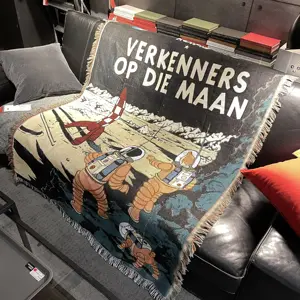Introduction to Textile Weaving Art
Textile weaving art is a timeless craft that combines creativity and technical skill to produce fabric creations that are not only functional but also artistic in nature. This intricate process involves weaving threads together to create intricate patterns and designs, making it a vital part of cultural heritage across various societies. Textile weaving art has evolved over centuries and continues to inspire artists and craftsmen around the world, enriching both homes and galleries with its diverse offerings.
Types of Textile Weaving Art
Several types of textile weaving art showcase the rich variety and depth of this craft:
- Hand Weaving: This traditional method involves manually weaving fabric on a loom, allowing for intricate designs and personalization.
- Machine Weaving: Utilizing modern technology, machine weaving offers faster production and can create consistent patterns ideal for industrial applications.
- Jacquard Weaving: This technique employs a special loom to produce elaborate designs, often featuring complex patterns and textures.
- Tapestry Weaving: A form of textile art that focuses on creating images and patterns, tapestry weaving is characterized by its heavy, pictorial fabric.
Function and Feature of Textile Weaving Art
The functional aspects of textile weaving art go beyond mere aesthetics. Here are some key features:
- Durability: Well-crafted woven textiles are known for their strength and longevity, making them suitable for various uses including clothing, furnishings, and art pieces.
- Versatility: The wide array of weaving techniques allows for varied applications, catering to needs ranging from practical household items to exquisite artistic displays.
- Eco-Friendliness: Many textile artists focus on using sustainable and natural materials, reinforcing the importance of environmentally responsible practices in modern weaving.
- Aesthetic Appeal: The beauty of woven textures and patterns can enhance any space, adding a layer of sophistication and warmth to interiors.
How to Choose Textile Weaving Art for Your Needs
Choosing the right textile weaving art requires careful consideration of several factors to ensure the selected piece meets your functional and aesthetic preferences:
- Purpose: Consider what you need the textile for—decorative wall hangings, functional throws, or clothing. Each type has a different appeal and purpose.
- Style and Design: Look for patterns and colors that resonate with your personal taste or the existing decor in your space. Traditional, modern, or eclectic styles each offer unique aesthetics.
- Material: Evaluate the fabrics used in the weaving process. Common materials include cotton, wool, silk, and synthetic blends. Each material has distinct attributes, such as texture, breathability, and durability.
- Artist and Craftsmanship: Supporting artisans and understanding the skill level behind the craft can be crucial. Consider the artist's portfolio and their dedication to quality work.
Applications of Textile Weaving Art
The applications of textile weaving art are vast, transcending mere artistic expression to find places in various aspects of daily life:
- Home Decor: Woven textiles, such as rugs, wall hangings, and cushions, can significantly enhance the aesthetic of any room.
- Fashion: Unique fabrics produced through textile weaving can be transformed into high-end clothing items, scarves, and accessories that stand out.
- Art Exhibitions: Tapestries and art pieces crafted through weaving techniques are frequently showcased in galleries, highlighting the artistic side of this craft.
- Functional Items: Weaving is not limited to decorative items; practical products like bags, curtains, and upholstery also benefit from this rich artistic tradition.









![[misoknit] AMOR can work easily and comfortably with specific fabric materials The Best Selling Good Item](http://s.alicdn.com/@sc04/kf/A1286e3525fca4f4b94bf5076f6b291d39.jpg_300x300.jpg)
![[misoknit] AMOR can work easily and comfortably with specific fabric materials The Best Selling Good Item](http://s.alicdn.com/@sc04/kf/Aa09d0eaddff24de4aa6e83154db1f641R.jpg_300x300.jpg)
![[misoknit] AMOR can work easily and comfortably with specific fabric materials The Best Selling Good Item](http://s.alicdn.com/@sc04/kf/Ac9d4c4ecfb3445d698fb4802a600b894i.jpg_300x300.jpg)
![[misoknit] AMOR can work easily and comfortably with specific fabric materials The Best Selling Good Item](http://s.alicdn.com/@sc04/kf/Ad70119d49e34438297a2d0c70d3e6498e.jpg_300x300.jpg)
![[misoknit] AMOR can work easily and comfortably with specific fabric materials The Best Selling Good Item](http://s.alicdn.com/@sc04/kf/Ac96b081033f74db8a05c631935b2b6b59.jpg_300x300.jpg)
![[misoknit] AMOR can work easily and comfortably with specific fabric materials The Best Selling Good Item](http://s.alicdn.com/@sc04/kf/A85b904da73fc4f8b932d71f9fcdfd013N.jpg_300x300.jpg)































